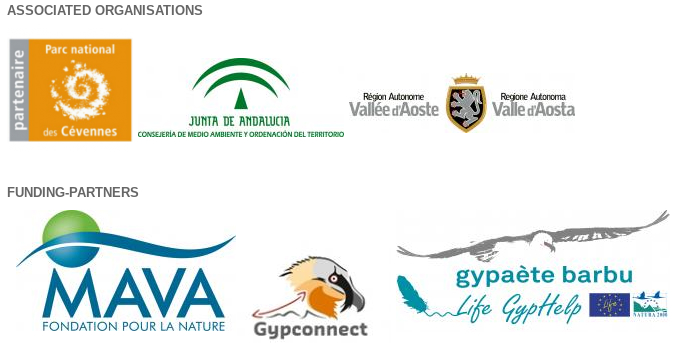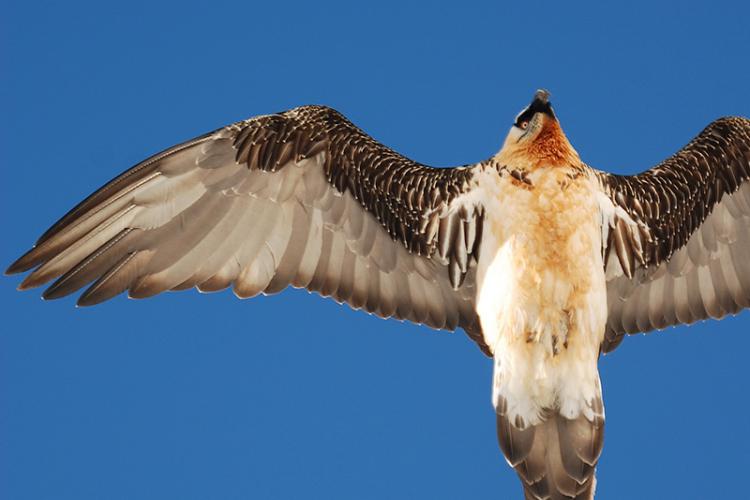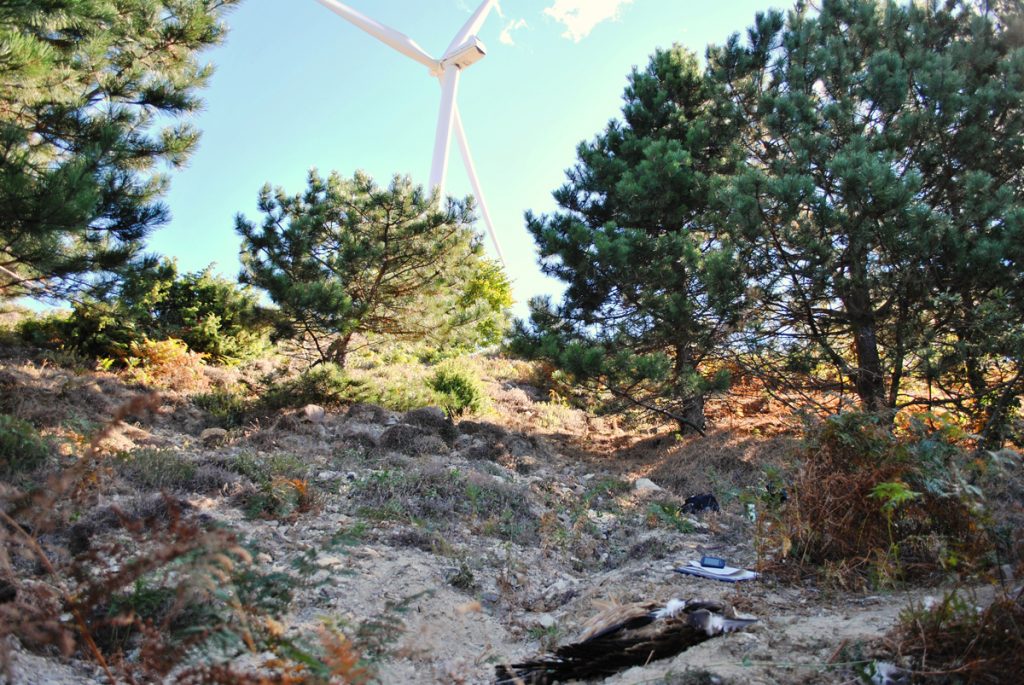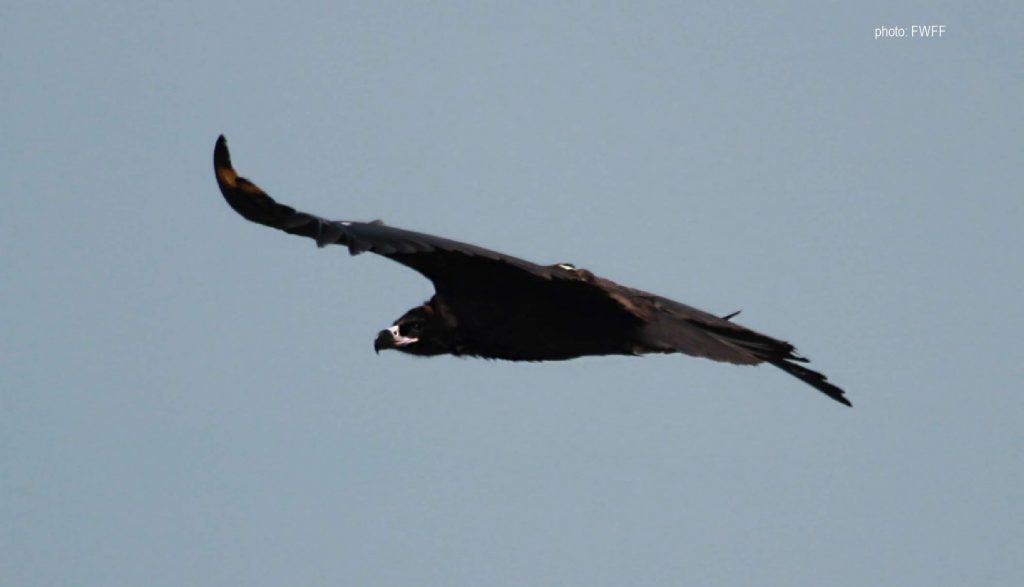
A stronghold for several species of vultures, Oman holds an important resident population of Egyptian vultures, and is also a crucial wintering area for a very large number of Egyptian vultures migrating from Eastern Europe.
This creates good opportunities for conservation activities, including monitoring and tracking of birds, which help us better understand their ecology. In Oman, researchers are trying to answer questions like:
- Do changes in local waste management affect vulture movement?
- Is there risk of electrocution for vultures?
- Where do migrant vultures come from?
- What is the mortality rate of vultures in Oman?
Since January 2015, Dr. Mike McGrady has been tracking Egyptian vultures in Oman via GPS transmitters, working with the Environment Society of Oman and volunteers.
Between 2015 and 2016, at the main municipal rubbish dump at Muscat, Mike and his team fitted transmitters to 4 juvenile and sub-adult vultures and tracked them. Some details of that tracking have been made available at a popular blog and have revealed interesting and relevant information, namely:
- some vultures are electrocuted in Oman
- rubbish dumps are important for vultures
- upgrades in waste management in Oman may not have an entirely negative impact on vultures there
In 2018, Mike McGrady and his volunteers were back at Muscat, and were able to tag a total of 13 Egyptian vultures with GPS transmitters. 12 of these birds are adults, and all of them have already given surprising insights on the birds’ ecology. One of the tags was provided by VCF, through the “Vulture Baseline Data” project, funded by the MAVA foundation.
And what are the vultures doing? Most of the vultures have spent their days ranging mostly in northeast Oman in the Hajar mountains and surrounding foothills. They have made regular visits to landfills, roosted in steep wadis in the mountains, and perched on high voltage electricity pylons.
Do you want to know more about the movements and ecology of the Egyptian vultures tagged in Oman?
Visit our Egyptian vulture online maps, and follow the birds
Visit Mike McGrady’s blog
More details on the Egyptian vulture project in Oman
The work on Egyptian vultures in Oman extends back to 2012, when Mike McGrady was part of a team that surveyed breeding Egyptian vultures on the island of Masirah. At the time, it was thought that there were 12 breeding pairs on the island, but the team found a staggering 53 breeding pairs and estimated there to be 65 to 80 territories, making Masirah the second densest Egyptian vulture population in the world, next to Socotra Island, Yemen. That work has been published in the regional ornithological journal, Sandgrouse. With Waheed Al Fazari, Mike has also published in Sandgrouse information on vultures using the Muscat municipal rubbish dump.
This project has been mainly supported through in-kind contributions and a bit of financial support from the Greater Los Angeles Zoo Association. In 2018, the project has received in-kind support from ESO and Faisal Al Lamki, and transmitters from Dr. B. Meyburg and the Vulture Conservation Foundation
Related posts
https://www.4vultures.org/2016/02/12/egyptian-vulture-research-and-monitoring-in-oman/










